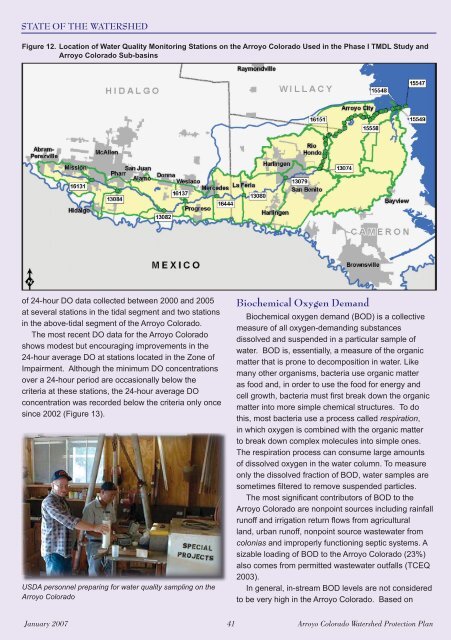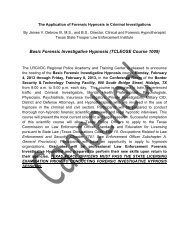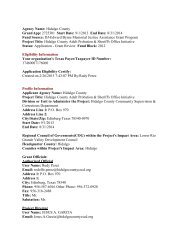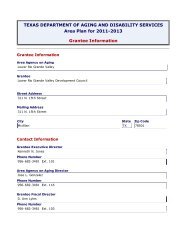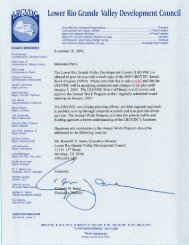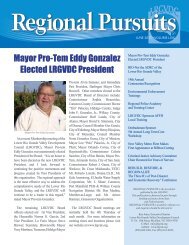Watershed Protection Plan - Lower Rio Grande Valley Development ...
Watershed Protection Plan - Lower Rio Grande Valley Development ...
Watershed Protection Plan - Lower Rio Grande Valley Development ...
You also want an ePaper? Increase the reach of your titles
YUMPU automatically turns print PDFs into web optimized ePapers that Google loves.
STATE OF THE WATERSHED<br />
Figure 12. Location of Water Quality Monitoring Stations on the Arroyo Colorado Used in the Phase I TMDL Study and<br />
Arroyo Colorado Sub-basins<br />
of 24-hour DO data collected between 2000 and 2005<br />
at several stations in the tidal segment and two stations<br />
in the above-tidal segment of the Arroyo Colorado.<br />
The most recent DO data for the Arroyo Colorado<br />
shows modest but encouraging improvements in the<br />
24-hour average DO at stations located in the Zone of<br />
Impairment. Although the minimum DO concentrations<br />
over a 24-hour period are occasionally below the<br />
criteria at these stations, the 24-hour average DO<br />
concentration was recorded below the criteria only once<br />
since 2002 (Figure 13).<br />
USDA personnel preparing for water quality sampling on the<br />
Arroyo Colorado<br />
Biochemical Oxygen Demand<br />
Biochemical oxygen demand (BOD) is a collective<br />
measure of all oxygen-demanding substances<br />
dissolved and suspended in a particular sample of<br />
water. BOD is, essentially, a measure of the organic<br />
matter that is prone to decomposition in water. Like<br />
many other organisms, bacteria use organic matter<br />
as food and, in order to use the food for energy and<br />
cell growth, bacteria must fi rst break down the organic<br />
matter into more simple chemical structures. To do<br />
this, most bacteria use a process called respiration,<br />
in which oxygen is combined with the organic matter<br />
to break down complex molecules into simple ones.<br />
The respiration process can consume large amounts<br />
of dissolved oxygen in the water column. To measure<br />
only the dissolved fraction of BOD, water samples are<br />
sometimes fi ltered to remove suspended particles.<br />
The most signifi cant contributors of BOD to the<br />
Arroyo Colorado are nonpoint sources including rainfall<br />
runoff and irrigation return fl ows from agricultural<br />
land, urban runoff, nonpoint source wastewater from<br />
colonias and improperly functioning septic systems. A<br />
sizable loading of BOD to the Arroyo Colorado (23%)<br />
also comes from permitted wastewater outfalls (TCEQ<br />
2003).<br />
In general, in-stream BOD levels are not considered<br />
to be very high in the Arroyo Colorado. Based on<br />
January 2007 41 Arroyo Colorado <strong>Watershed</strong> <strong>Protection</strong> <strong>Plan</strong>


